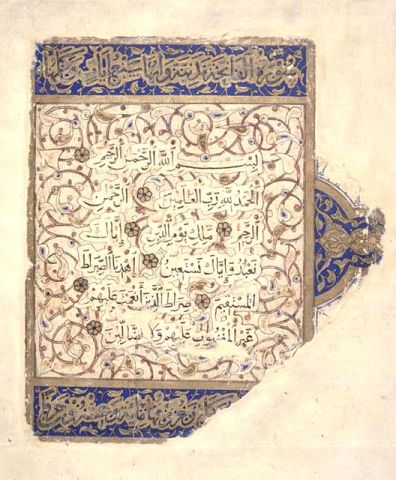Welcome Friends: Ahlan wa sahlan!
Yusuf Ali’s Translation of this Chapter
Muhammad Asad’s Translation of this Chapter.
Their commentaries can only be read in verse by verse view.
COMMENTS:
1. Our Reading today begins with Verse 28 (from page 224) where Prophet Noah, peace upon him, responds to the accusations of his people (discussed yesterday).
He begins with the endearing words ‘O my people,’ then tells them that he had received Mercy from his Lord which ‘remained obscured to them’ (he does NOT accuse them of being ‘blind’ to it), and assures them that he wouldn’t force them into anything they were unwilling to do!
His was what Yusuf Ali calls: ‘a pattern of humility, gentleness, firmness, persuasiveness, truth, and love for his own people.’ Commentators, such as Zamakhshari and others, have highlighted Noah’s beautiful response, showing that it is in line with HQ 2:256, as indeed any Divine Message is:
His was what Yusuf Ali calls: ‘a pattern of humility, gentleness, firmness, persuasiveness, truth, and love for his own people.’ Commentators, such as Zamakhshari and others, have highlighted Noah’s beautiful response, showing that it is in line with HQ 2:256, as indeed any Divine Message is:
لا إكراه في الدين
Indeed, this statement rings true at all times: Each of us has a personal standard of accountability we feel and respond to, keeping ourselves in line with what we believe. No one can enforce any Standard of Accountability upon others! We referred to that earlier saying:
“Verse 2: 256 is one of the most-quoted verses by Muslims today when they allude to the manner in which Islam has traditionally dealt with people of other faiths; not forcing them to convert. Indeed, faith cannot be enforced, which is why: ‘There shall be no coercion in matters of Faith.’ Read Asad’s explanation (note 249) of ‘deen’ as ‘the contents of and the compliance with a morally binding law…’ and that the meaning depends on context, which could be ‘religion,’ however in the widest sense of the word.
The context in which Muslims have traditionally understood this verse is very important, and, as Asad says, it “disposes of the widespread fallacy that Islam places before unbelievers the alternative of ‘conversion’ or the sword.”
PAGE 225 Arabic Qur’an.
2. Verses 29- 30 both begin with ‘O my People,’ as Prophet Noah presents his case, showing them that he asks nothing for himself, but seeks their own good. He also refuses their arrogant demand, saying that he will not reject those who have attained Faith (and deemed by them ‘lower-class’).
In verse 31 Prophet Noah begins by saying what Prophet Muhammad was commanded to say in HQ 6:50 (discussed on March 23rd), and then returns to defending those whom they had scorned.
3. In Verse 32 Noah’s people express their weariness at the lengthy discourse, and challenge him to bring on what he had forewarned. He responds (Verse 33- 34) that it is up to God, and they will never escape it. Also, their benefitting from his advice is ultimately up to God .
Verse 35 is an interpolation addressed to Prophet Muhammad in the middle of Prophet Noah’s story, showing the similarities between their experiences, peace upon both.
In Verses 36- 37 God gives Prophet Noah his people’s ultimatum, and tells him that none of those who remained in disbelief would ever change their minds, so he should start manufacturing the ‘fulk-فلك’ or ‘Arc’ under God’s Guidance. God also tells him NOT to ask Him to save the wrong-doers from drowning.
PAGE 226 Arabic Qur’an.
4. Verses 38-39 discuss the building of the Arc and people’s disbelief, as well as the warning they received. We mentioned one reason for their disbelief on April 10th:
“… each Messenger had an impact relative to Human Progress at the time of his appearance. ……When did people who lived inland first learn about flotation? Obviously, Noah’s people did not know anything about that, which is the more reason for them to ridicule his Arc. Furthermore, they could never imagine that a human could float above water or swim in it, as was clear in the response of Noah’s son to his invitation in HQ 11:43.”
5. Verse 40 mentions the beginning of the flood, and God’s command to Prophet Noah, to get his ‘passengers’ on board. See it, if you wish, in explanations of both Yusuf Ali and Muhammad Asad, although I prefer the unembellished interpretation of Arberry here, which seems truer to the original. In Arabic, we neither find the word ‘animals’ nor ‘male and female.’ It just says ‘of each one pair,’ which might also relate to crops and plant-life. To understand the Qur’an as revealed, we must clear our minds of all additional narrative, where ‘the entire world was being engulfed in water,’ and Noah had to take ‘every kind of domestic and exotic animal on board.’
I find it interesting to note that, despite all his efforts, the people who believed in him were not many.
In Verse 41, Noah announces that it was time to get on board his Arc: ‘In the name of God, its launch and its landing.’
6. Verses 42- 43 describe the mountain-size waves, and Noah’s insistence upon his son to join them. But his son, who was a Denier and obviously did not know about flotation or swimming, opted to ‘take refuge up a mountain.’ Noah tried to convince him, but to no avail, and he was of those who drowned.
7. Our Reading ends with Verse 44, and God’s command to the earth and skies to cease, and the Arc’s resting upon the Judi.
I’d rather NOT subscribe to any ‘location.’ Biblical commentators indicate a certain location for the Arc’s landing site, while historians, such as Dr. Ahmad Daoud, indicate another. These locations are more than 4,000 km. apart, so I’d keep an open mind!
Enough said!
Our next Reading is from HQ 11:45-60
Peace unto all!
.jpg)
No comments:
Post a Comment